Who Is Gabriel Magalhães?
Gabriel dos Santos Magalhães, or Gabriel, is a 22-year-old Brazilian centre-back who Arsenal have signed from Lille for a fee of £27m.
This is undoubtedly a coup for Arsenal.
Gabriel had been heavily linked with a whole host of European clubs over the last 12 months but chose a move to the Premier League instead.
Along with William Saliba finally arriving at the Emirates this summer from Ligue 1 as well, we could see the Gunners have an entirely new centre-back partnership next season, and it’s an area that Arsenal have been in dire need of strengthening for some time.
With Mustafi and Luiz entering the last year of their contracts and Sokratis heavily linked with a move away, while Pablo Mari has now joined permanently, there appears to be a changing of the guard at centre-back.
This scout report and analysis will examine Gabriel’s character and give a tactical analysis of what he will bring to the Arsenal starting line-up and how he might impact their tactics.
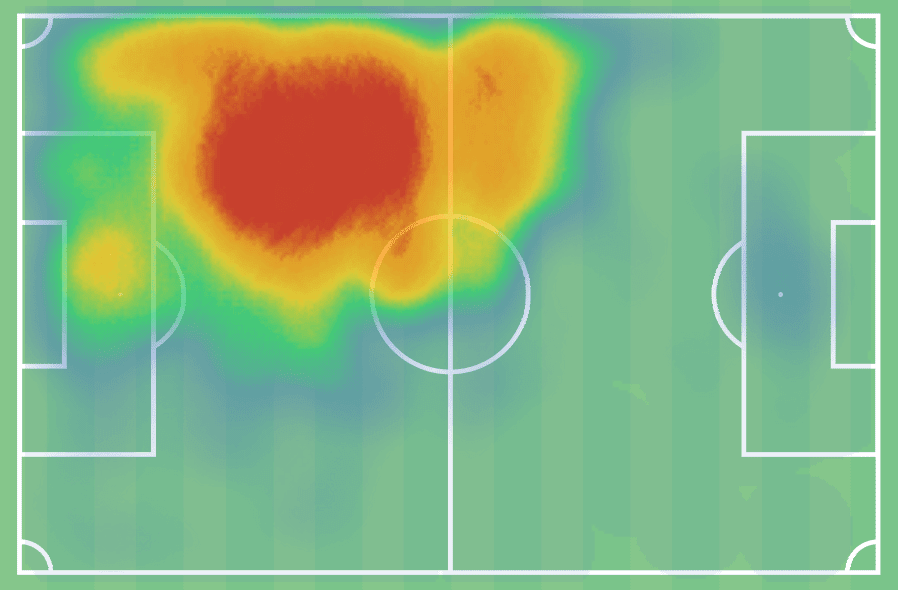
Gabriel Magalhães Style Of Play
Gabriel is naturally left-footed and, as such, plays as a left-sided centre-back.
During the build-up, he takes very wide positioning, where he can look to progress the ball through the half-space while also creating space for the pivot to drop in between the two centre-backs should they be so inclined.
Arsenal has done this frequently under Mikel Arteta so far, and Gabriel will easily slide into their formation when in possession.
Gabriel pushes forward and is aggressive off the ball.
It isn’t uncommon to see him follow the ball carrier well inside the opposition half.
At Lille, he has predominantly played as part of a back four, although there were five games last season where Lille played with a back three, to mixed success.
Arteta has shown a propensity for a back three himself and it is likely we will see Gabriel and Saliba start either side of David Luiz in a back three come the opening day of the season.
Gabriel Magalhães Tactical Analysis
In this section, we will see a brief overview of why Arsenal felt it necessary to invest in Gabriel.
One area Arsenal has really suffered in recent seasons is the lack of a dominant centre-back at the heart of the defence.
Last season they had the second-lowest aerial duel win percentage in the league winning an atrocious 43.1%, with only Norwich City registering a lower win percentage.
This percentage isn’t just down to centre-backs not winning headers.
However, you are generally likely to see the highest win percentages come from this position.
In the Premier League, David Luiz managed a 56.4% aerial duel win percentage, whilst Sokratis won 61.5%, Rob Holding won 60.5%, Calum Chambers won 46.5%, and Sead Kolasinac who, despite being a left-back, played much of the second half of the season as a left-sided centre-back, won 52.9%.
The only centre-back to truly stand out aerially was Mustafi, who won 76% of his aerial duels.
Aside from Mustafi, Gabriel is an upgrade on all of these players aerially.
Last season, he had a 64.34% aerial duel win percentage, which is strong.
Interestingly the next highest in Ligue 1 was William Saliba with 65%.
However, Gabriel averaged 5.22 aerial duels per game, compared to Saliba’s 3.4.
Arsenal didn’t have many standouts in terms of defensive duel win percentage, either.
Holding registered the highest percentage, an impressive 70.37%, although he played only eight league games.
The second-highest win percentage came from Chambers, who won 66.29%.
Gabriel won 69.23% of his defensive duels on average per 90 last season.
For a possession-based side, Arsenal lacked consistent ball progressors from the back as well.
David Luiz has built a reputation as a ball-playing centre-back, yet averaged only 7.91 progressive passes per 90 with a forward pass completion of 73.91%.
The only player to register good averages in these two metrics was Pablo Mari, who made 10.41 progressive passes per 90, with a forward pass completion of 84.85%.
Gabriel, on the other hand, averaged 11.46 progressive passes per 90, although interestingly had only a 75.92% forward pass completion, not as high as Pablo Mari, but higher than Luiz, despite attempting almost 50% more progressive passes than Luiz.
Last season, Gabriel’s average pass length was 22.93 metres, and the only Arsenal player with a higher average was Luiz, who had a 24.45-metre average, which was the fifth-highest amount for any centre-back to start a league game.
Gabriel Magalhães In possession
Despite his ability as a defender, highlighted by the statistics in the paragraphs above (and which we will discuss in more detail in the next section), Gabriel has grown a reputation as a smooth operator on the ball.
His departure will be a major loss for Lille, which used Gabriel as the anchor of nearly all of its build-up patterns.
He has an infallible calmness and confidence in possession and was a key operator in successfully circulating possession.
He was also the player in Lille’s backline who consistently looked to break lines with his passing.
He averaged 24.21 forward passes per 90, with only eight centre-backs in the league playing more.
His overall completion of 86.98 completion isn’t outstanding, but he did attempt 7.98 long passes per 90, and he completed less than 50% of these.
During the build-up, Gabriel rarely takes more than one or two touches in possession, moving the ball on quickly laterally until there is a clear forward pass opportunity.
Should the switch to the opposite side be on with little in front of him, he is accurate with these passes and makes his ball-playing decisions quickly.
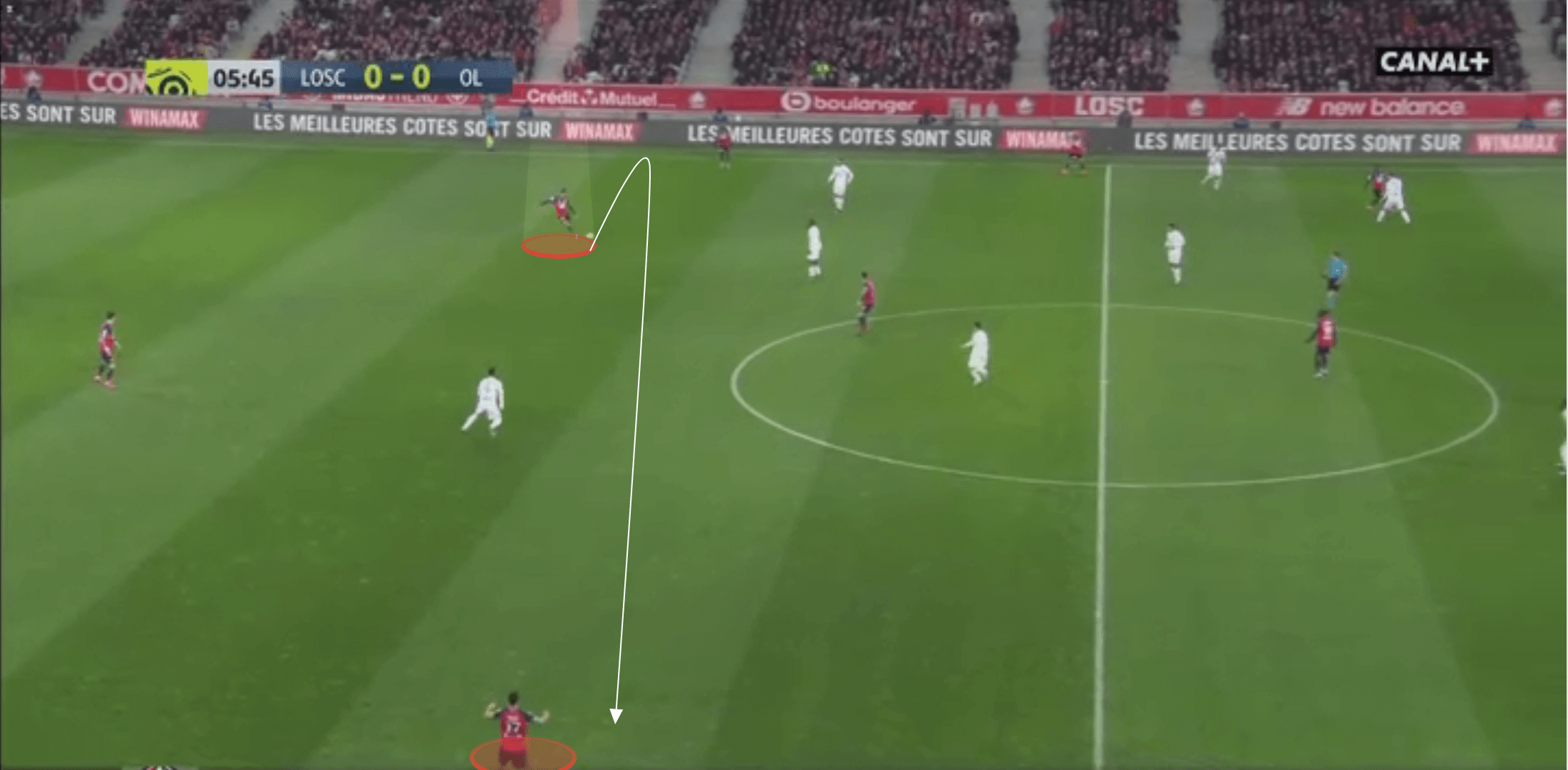
His 43.01-metre average per long pass is actually relatively low, with Sokratis, Pablo Mari, David Luiz, and Mustafi all having longer long pass average distances last season.
However, this is due to the type of long pass Gabriel plays.
Other than switching the ball like in the image above, Gabriel generally only has one other kind of long pass.
He tends to refrain from making big diagonal switches of play over the opposition full-back head and seems to restrict most of his long passes to direct vertical passes over the defence in the half-space channel.
Due to his positioning in this channel in possession, the left-back can push up high, just as a wing-back would do in Arteta’s system, and invert from a wide position into the half-space.
This long pass from Gabriel is actually relatively short due to the lack of angle.
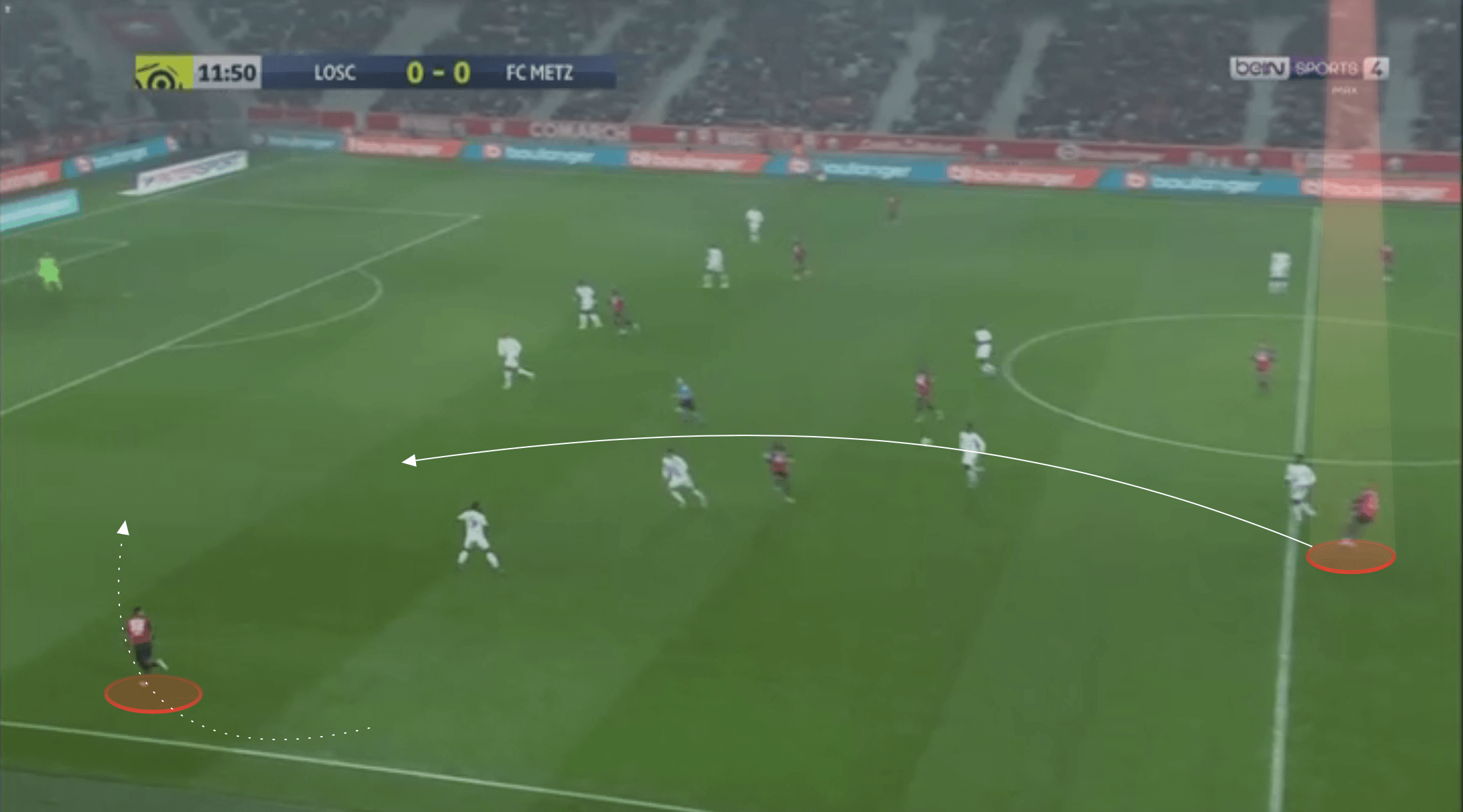
He hits this pass at a low trajectory but with enough backspin to ensure it doesn’t overrun, and it is incredibly effective.
He constantly looked to hit this pass for Lille, and their centre-forwards, as well as any wide players, would also look to latch onto these passes.
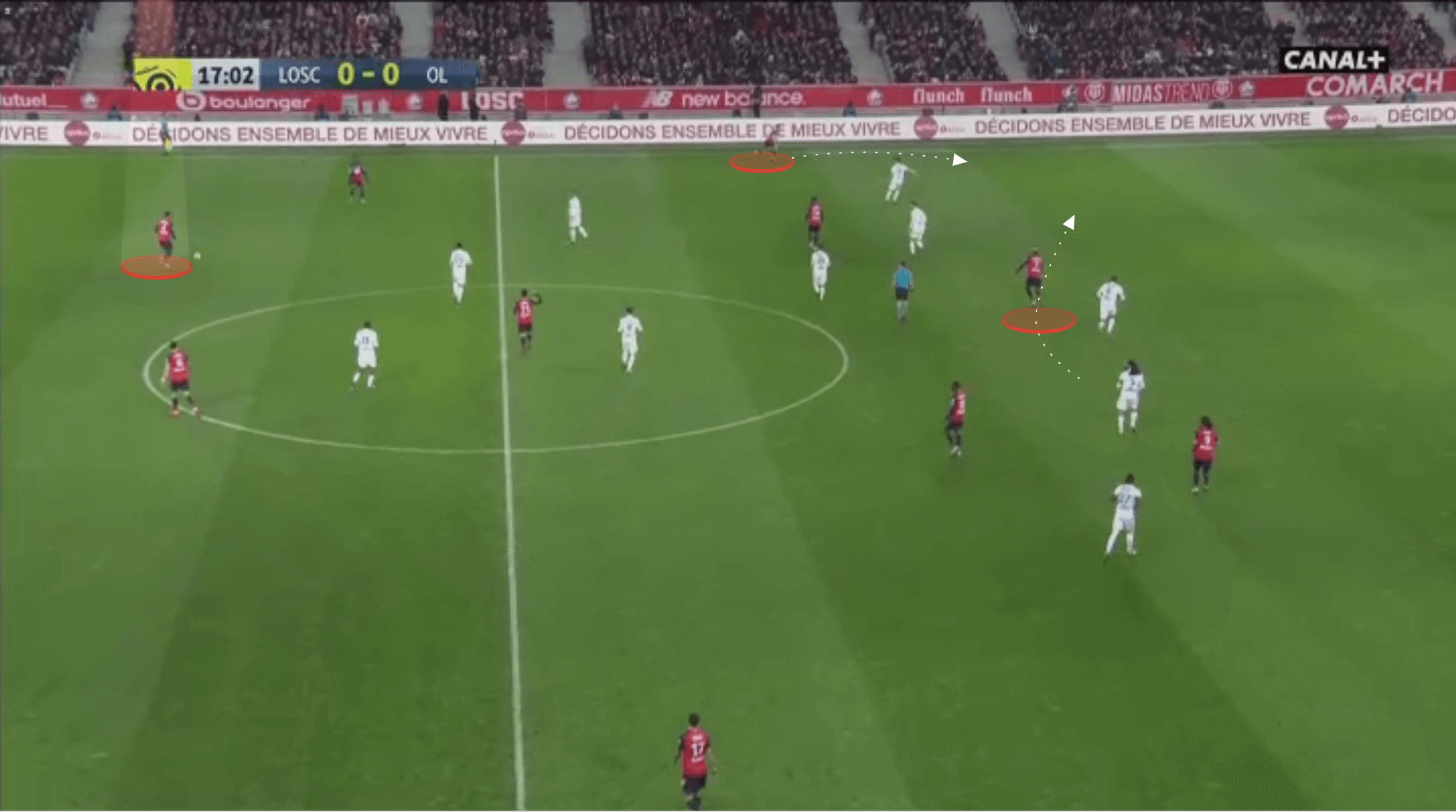
With Arsenal’s pace in the front line and the width provided by the wing-backs or wingers, depending on the formation chosen, this kind of pass with space to attack behind the opposition defence could prove deadly.
Aside from his ability with the ball in front of him, Gabriel’s strength on the ball is particularly noticeable.
And by strong, we mean physically strong, not in terms of ability.
When under pressure and playing out of a tight space, Gabriel is incredibly press-resistant.
As mentioned earlier he can play quickly off of few touches, but he is comfortable inviting on pressure.
He sometimes makes the unwise move of turning his back on the opponent but holds the ball up like an experienced target man.
He often grabs the back of the defender’s shirt, like in the image below, and cleverly restricts his opponent’s ability to manoeuvre.
From this position, he can either buy a foul or use his frame and body strength to simply hold off the player until he is ready to release the ball.
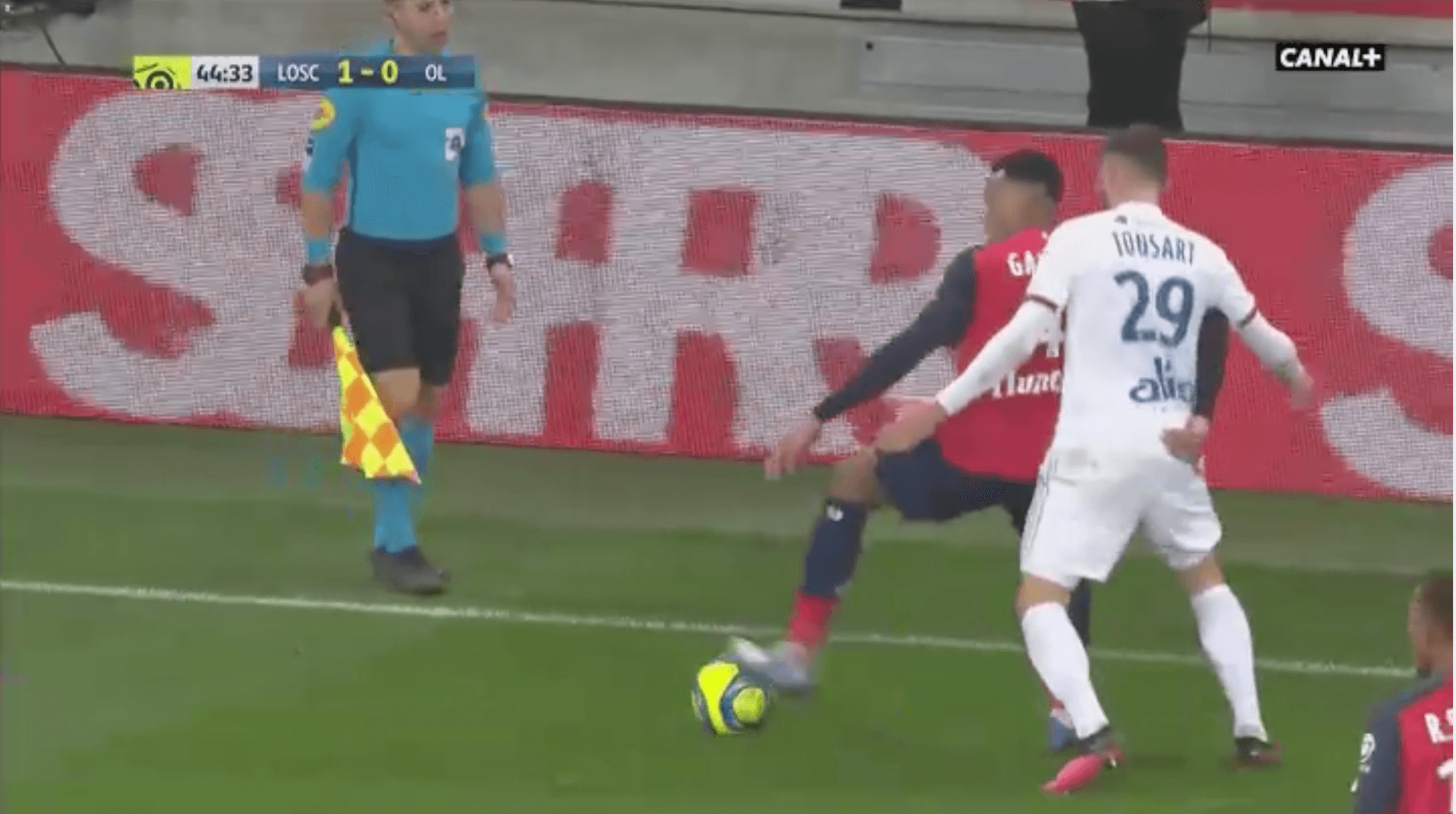
With his height, power and aerial presence, Gabriel is a useful tool from offensive set-pieces as well.
Lille would often use him as an option at the back post from indirect free kicks, such as the one in the image below.
Gabriel would look to isolate himself against his marker before heading the ball back across the box for his attackers to run onto.
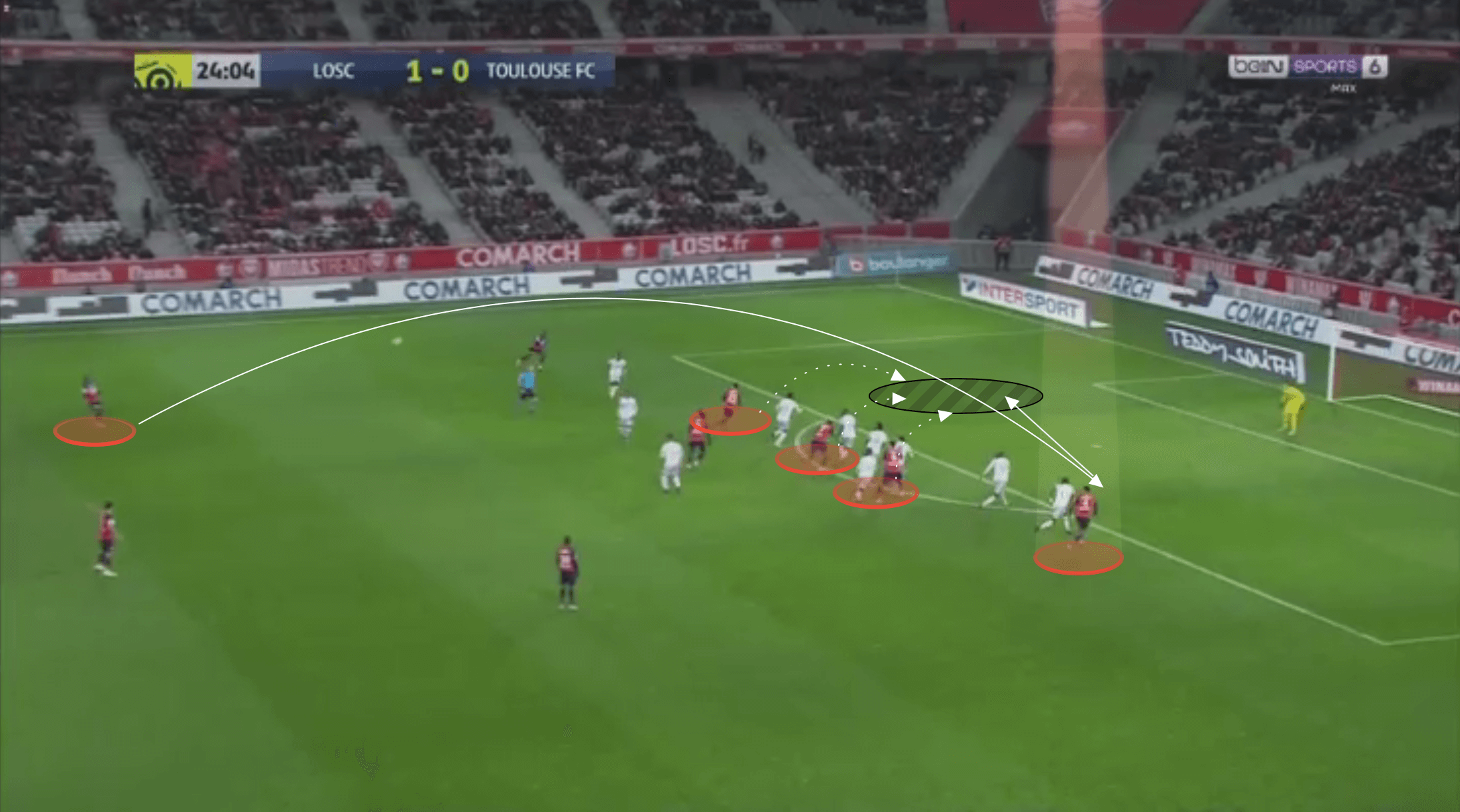
Out of possession
Gabriel’s pace, strength, and excellent reading of the game make him an outstanding defender overall.
He reads the game well and reacts so quickly to any change in the shape of his defence, dropping in and covering immediately should his centre-back partner push forward.
He frequently sweeps behind a slower centre-back to cover should the opposition look to hit the ball over the top.
While he does cut across onto the right side, crossing sides with his partner, he always gets to the ball first, and this crossing over is less of an issue as a result.
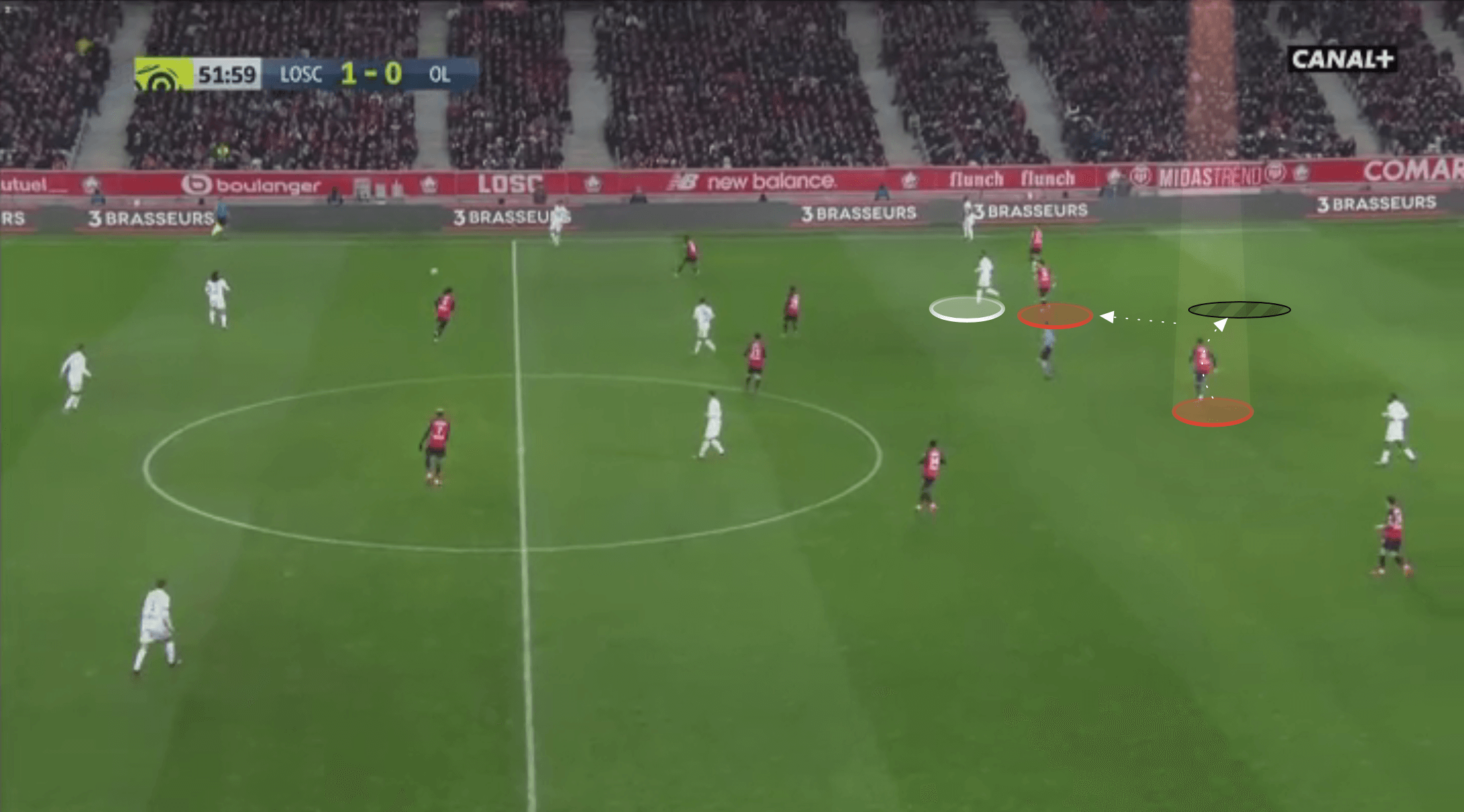
He does an excellent job of getting in front of the defender when he does this and uses his frame to shield the ball, again either winning a foul or holding off the forward until the ball is settled before playing back to the goalkeeper.
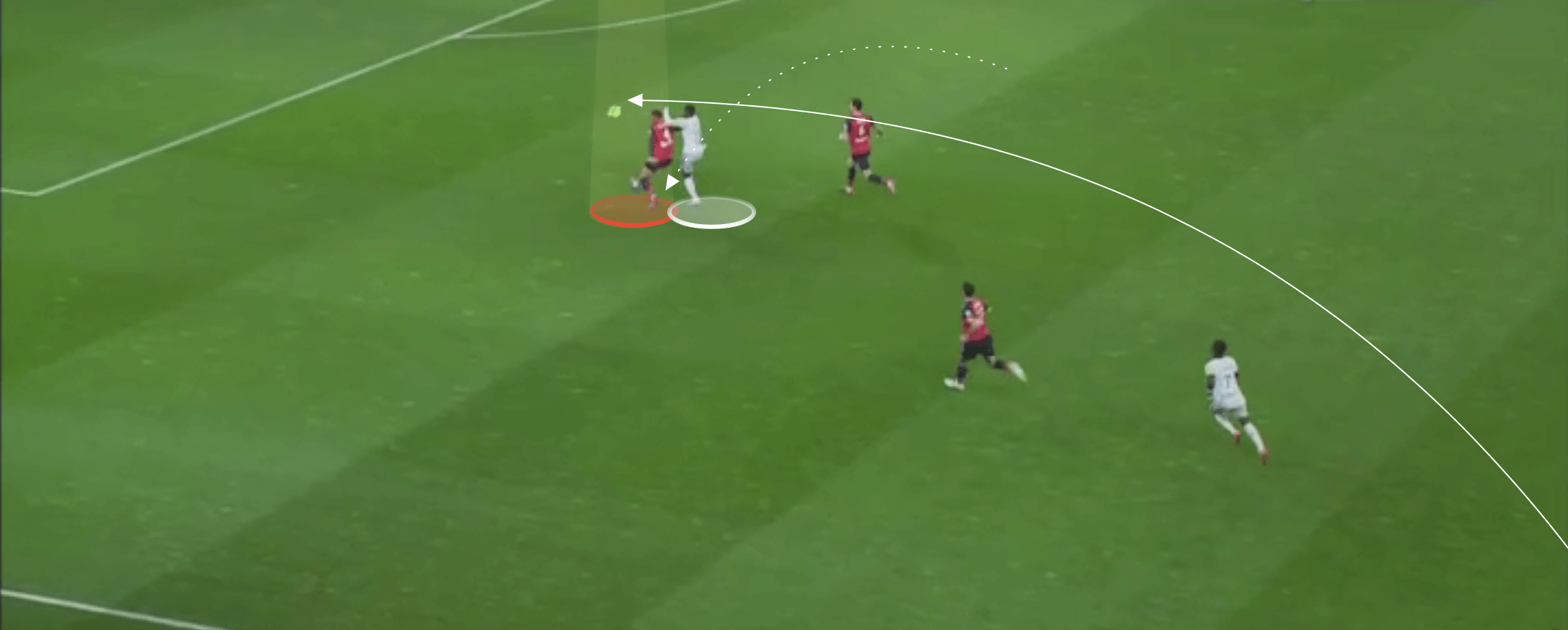
Gabriel’s defensive awareness is terrific at all times, and not just when the ball is in the opposition’s half or close to the halfway line, as he watches for the pass in behind.
On a quick break where the defence is stretched, it’s so easy for the centre-back in Gabriel’s position (highlighted below) to watch the ball.
Centre-forwards will so often steal into the space by the far post and latch onto a cross-field pass.
Gabriel constantly checks his shoulder on these quick breaks and doesn’t overcommit with his positioning.
He protects the central space while also being very aware of the forward arriving late to the back post.
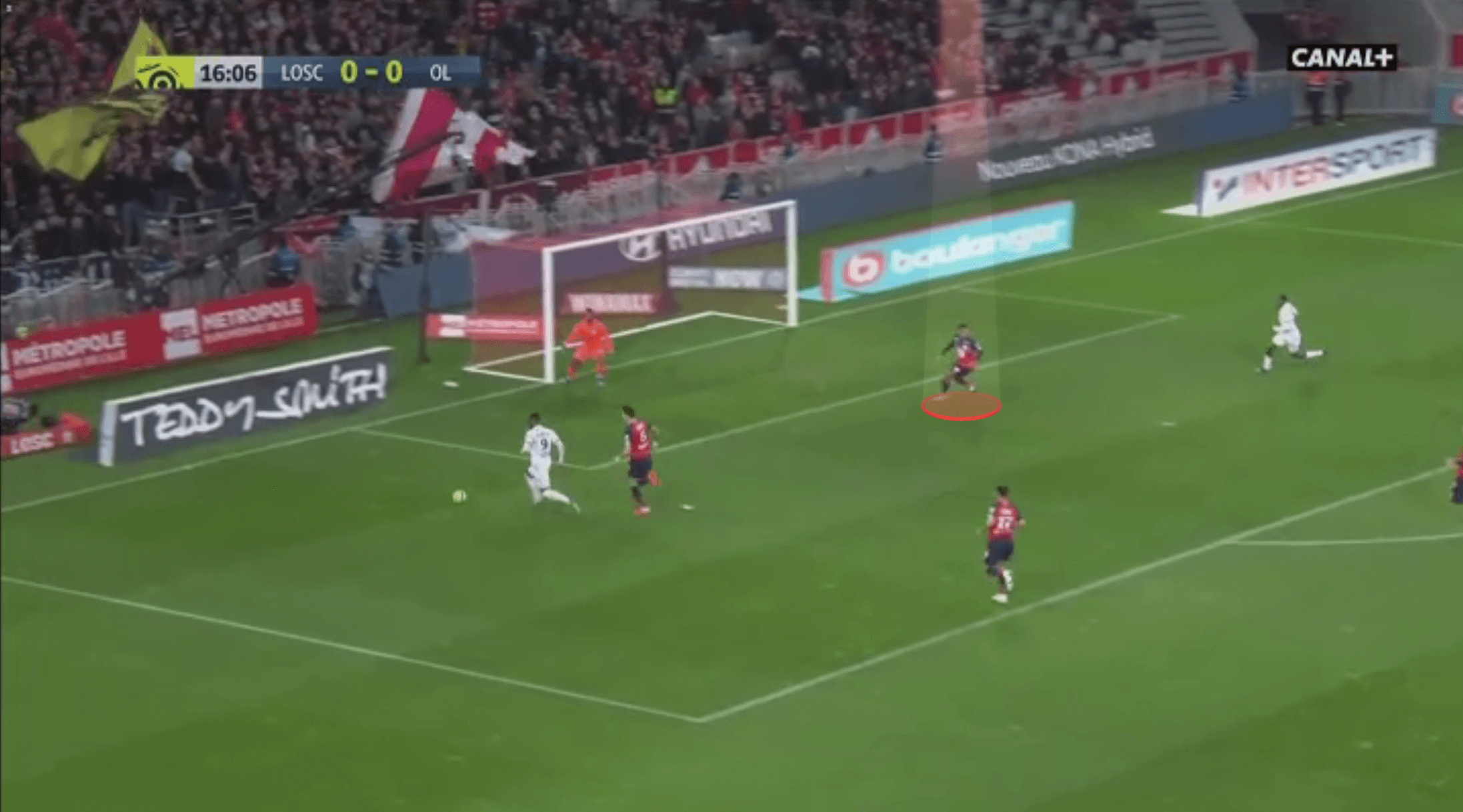
He continues to demonstrate his excellent reading of the game with his positioning as the opposition break the lines, hitting the space between Gabriel’s defence and his midfield.
He initially reacts in these instances by closing the gap, to ensure the ball-carrier has to take a closer touch.
In doing so, this allows Gabriel’s midfield teammates the time to recover.
However, after this first step towards the ball, Gabriel positions himself to move back towards his goal, getting on his side and showing the ball-carrier down the line, away from goal.
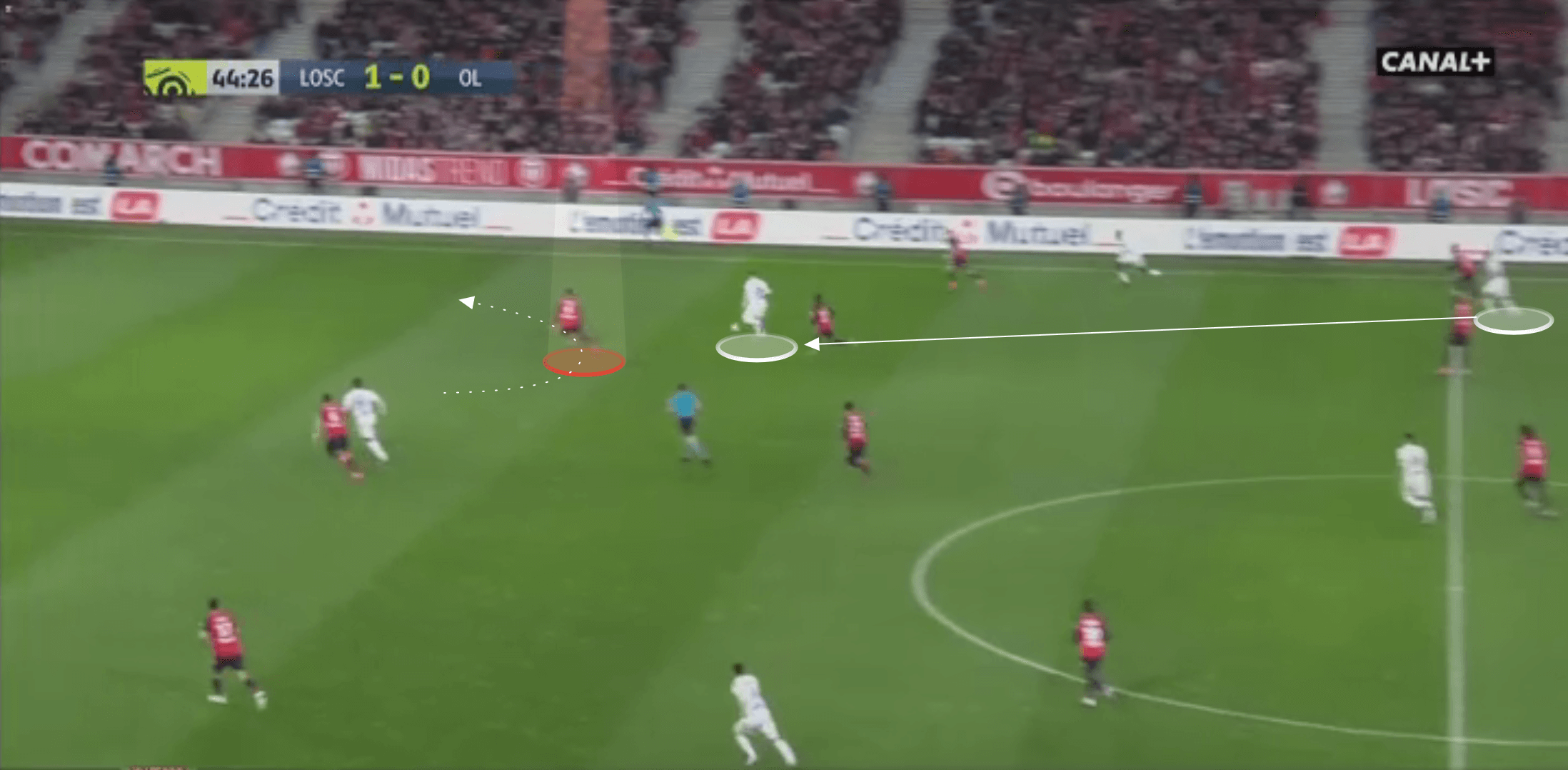
His initial movement before getting on his side not only allows him to engage in the 1v1 duel with the highest chance of staying with his opponent and getting himself between the ball and the opponent should they look to take him on, but it also prevents the pass inside, as Gabriel places himself in the passing lane between the two opposition forwards.
Gabriel’s defending is often characterised by being initially aggressive before using his reading of the game and timing to take a more measured approach to defending.
When he covers in deeper areas he’s happy to push out wide, but he is challenging to beat, and there will always be plenty of time for his left-back to drop back and cover Gabriel’s space in the centre-back position.
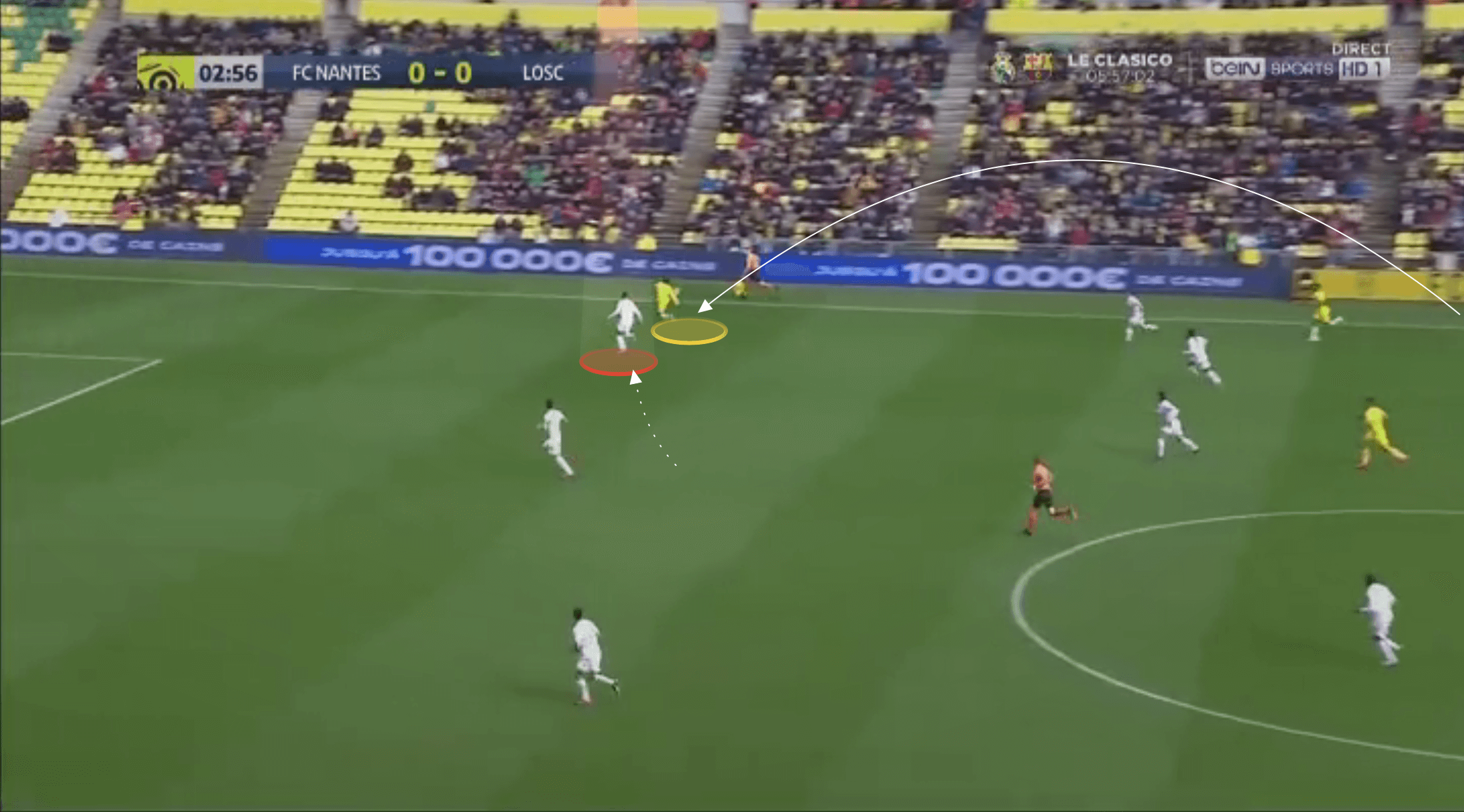
If the opponent turns, Gabriel gives little space and trusts his pace on the turn to beat the opponent should they look to hit the ball behind him.
He doesn’t bite on any fakes or dummies from the dribbler, reading the ball rather than the player, as we can see in the image below.
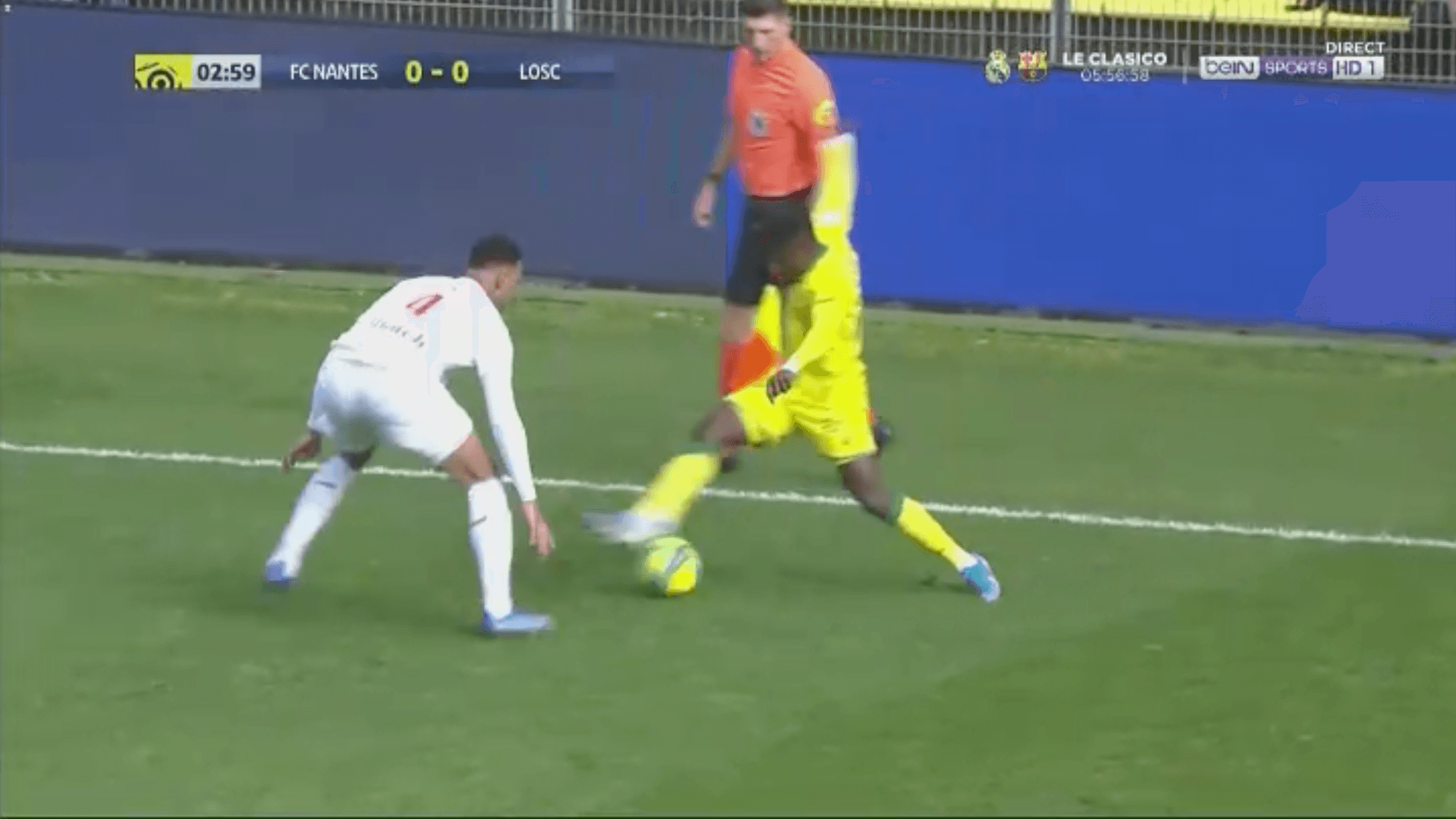
He waits for the perfect moment to time the tackle as the opponent shows too much of the ball.
He tackles with both feet and doesn’t dive in, rarely going to ground either.
He tackles with force but still has enough control to retain possession afterward and transition his team into attack.
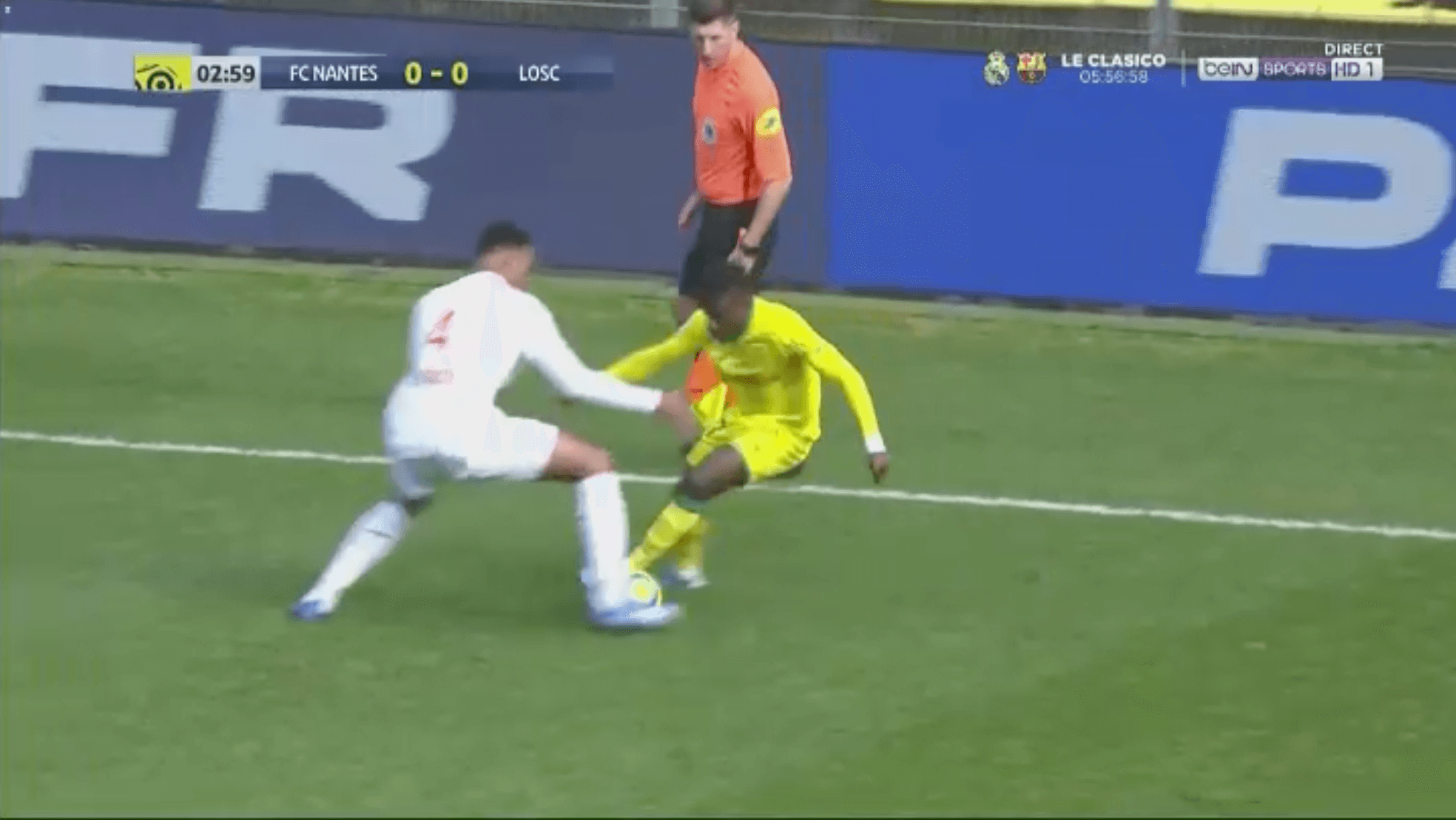
Gabriel generally waits to see the opponent’s first touch when they are played into these kinds of areas.
If it is a good touch and they look to turn quickly, he’ll back off slightly and begin the 1v1 phase, as we saw above.
However, if there is a poor touch, or they don’t look to turn straight towards the goal, Gabriel is once again aggressive in getting close to the defender.
He isn’t afraid of getting physical with a forward and will be firm but fair.
He will use his strength and body to force the opponent off the ball in these situations.
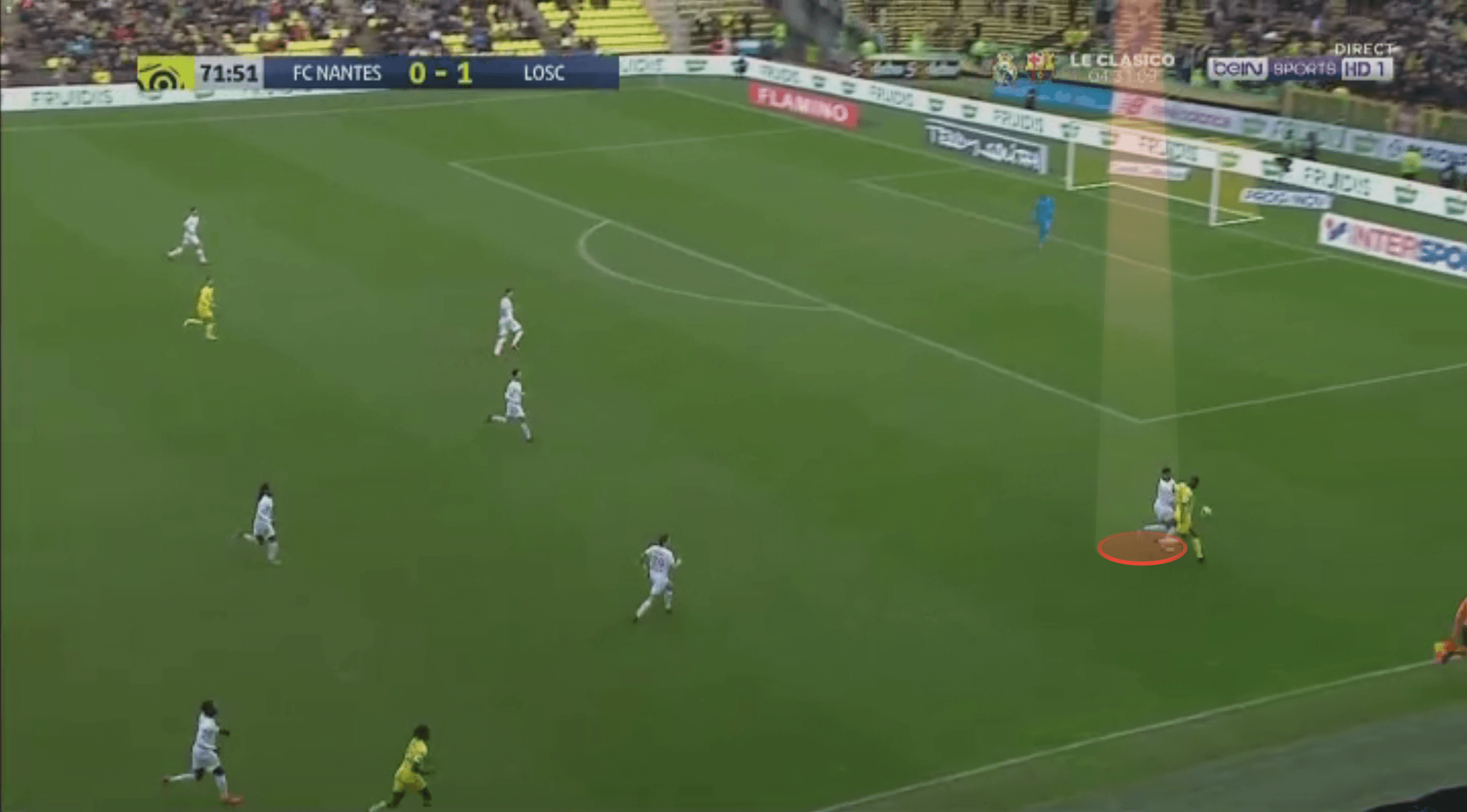
He pushes forward to engage in the aerial duel, and while he has the pace and composure to act as more of a sweeper, we know he is more than capable aerially.
From goal-kicks, you’re likely to see him push up to the midfield line to attack the ball.
His timing is excellent, and he humps early to get higher before the attacker, but still meets the ball at the height of his jump.
His accuracy from his headers is decent, too.
These aren’t just headers to push the ball up the field, and he often finds the feet of a teammate.
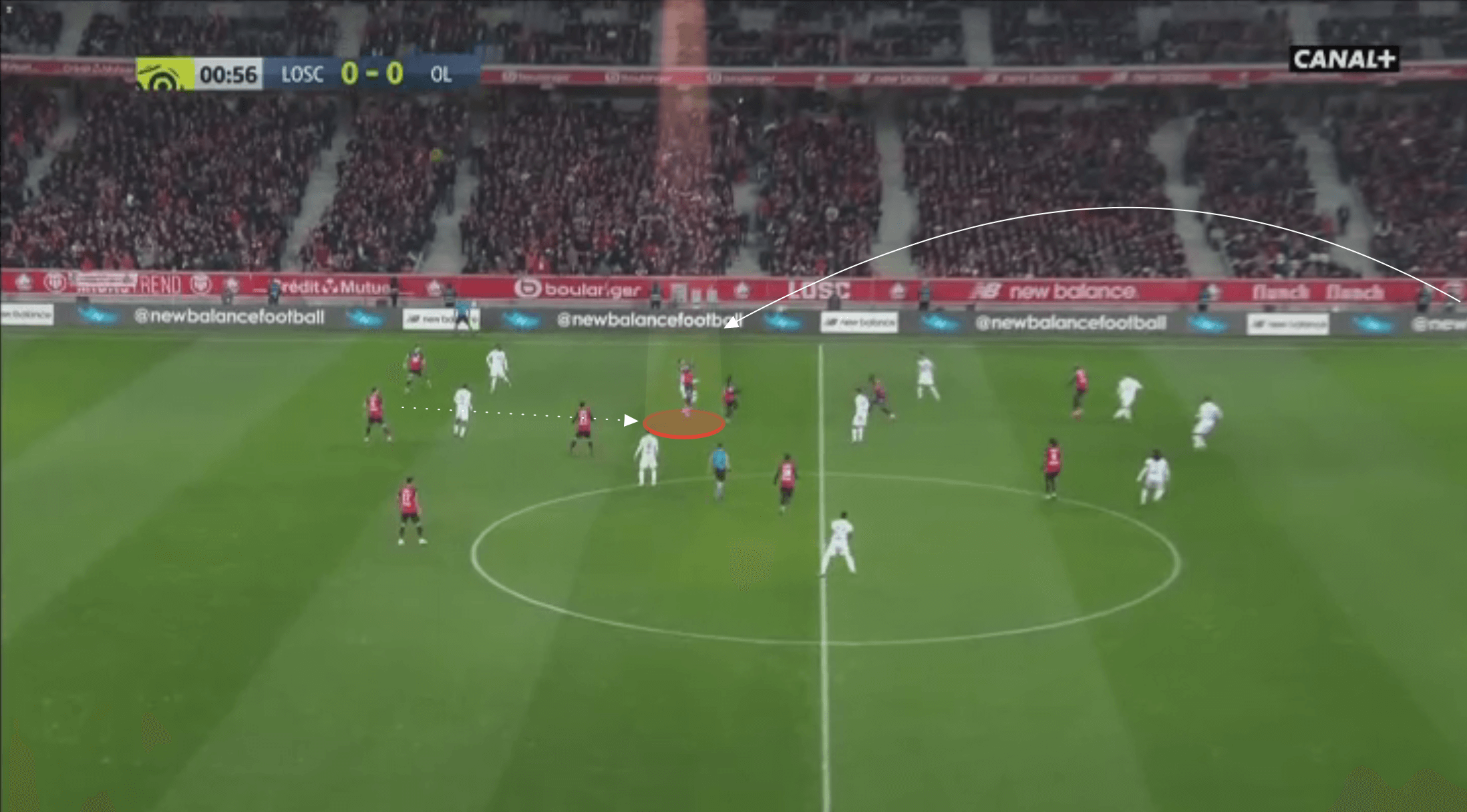
Gabriel Magalhães Transitions
With his pace and game reading, Gabriel is quick to transition into defence or attack.
Because he is so important to their build-up phase, Gabriel is quick to find space so he can get on the ball as efficiently as possible.
However, there isn’t a great deal of difference between where he is on the pitch defensively and where he needs to be in transition.
On the defensive transition, however, there are more variables.
As mentioned earlier he is excellent at dealing with a quick break, covering space whilst also being aware of any players making a run in behind.
In the image below, Lille have given away possession trying to play out from the back, and Gabriel immediately tucks inside.
From this position, he can cover his centre-back partner should the ball carrier successfully beat them on the dribble, while he can prevent the pass inside and mark the run of the second forward as the move progresses.
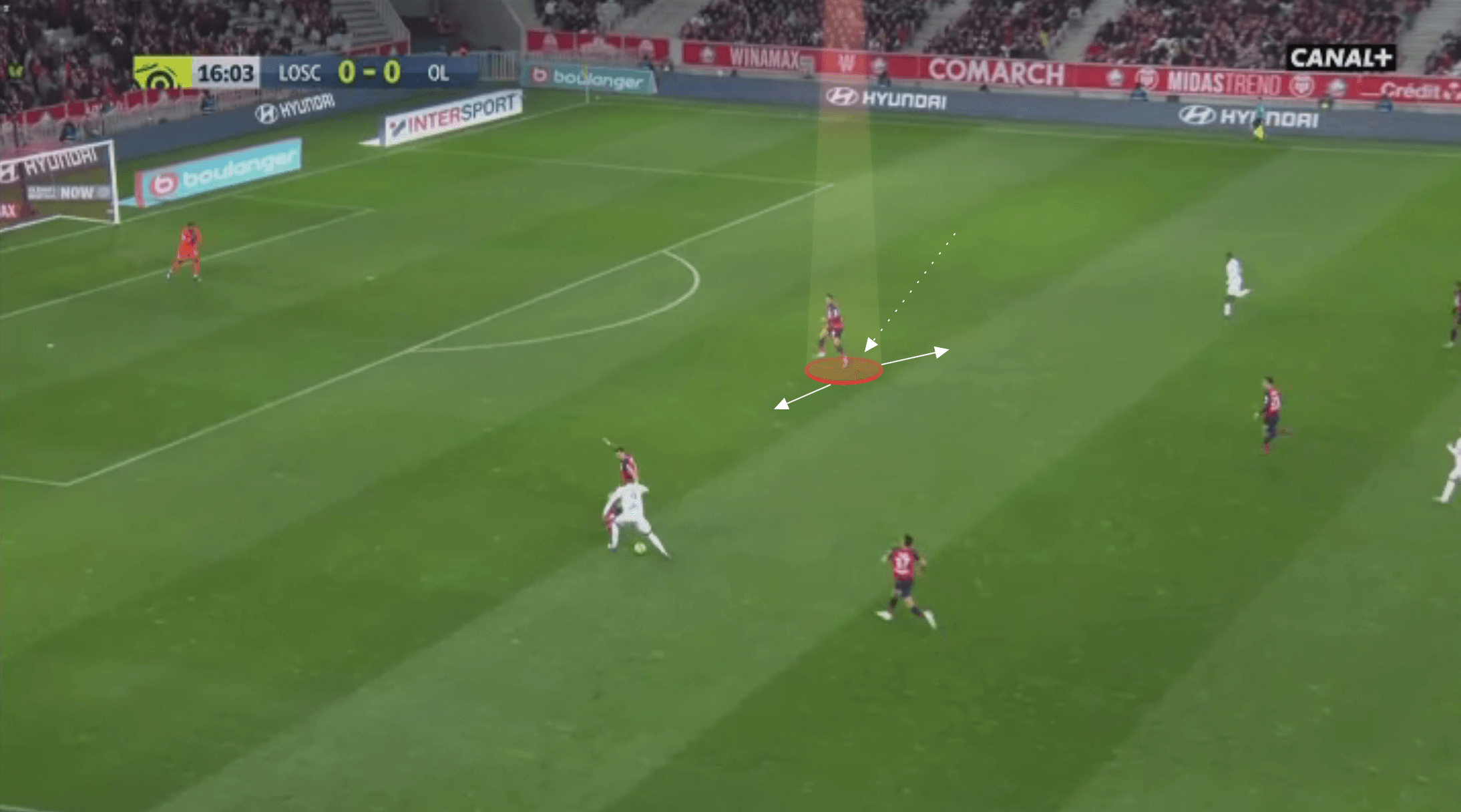
The further up the pitch where the defensive transition occurs he tends to be more aggressive with how he reacts.
If close to the ball, he immediately looks to press the ball-carrier and counter-press.
In these instances, he can overcommit and leave space behind him, meaning he is easily bypassed on occasion.
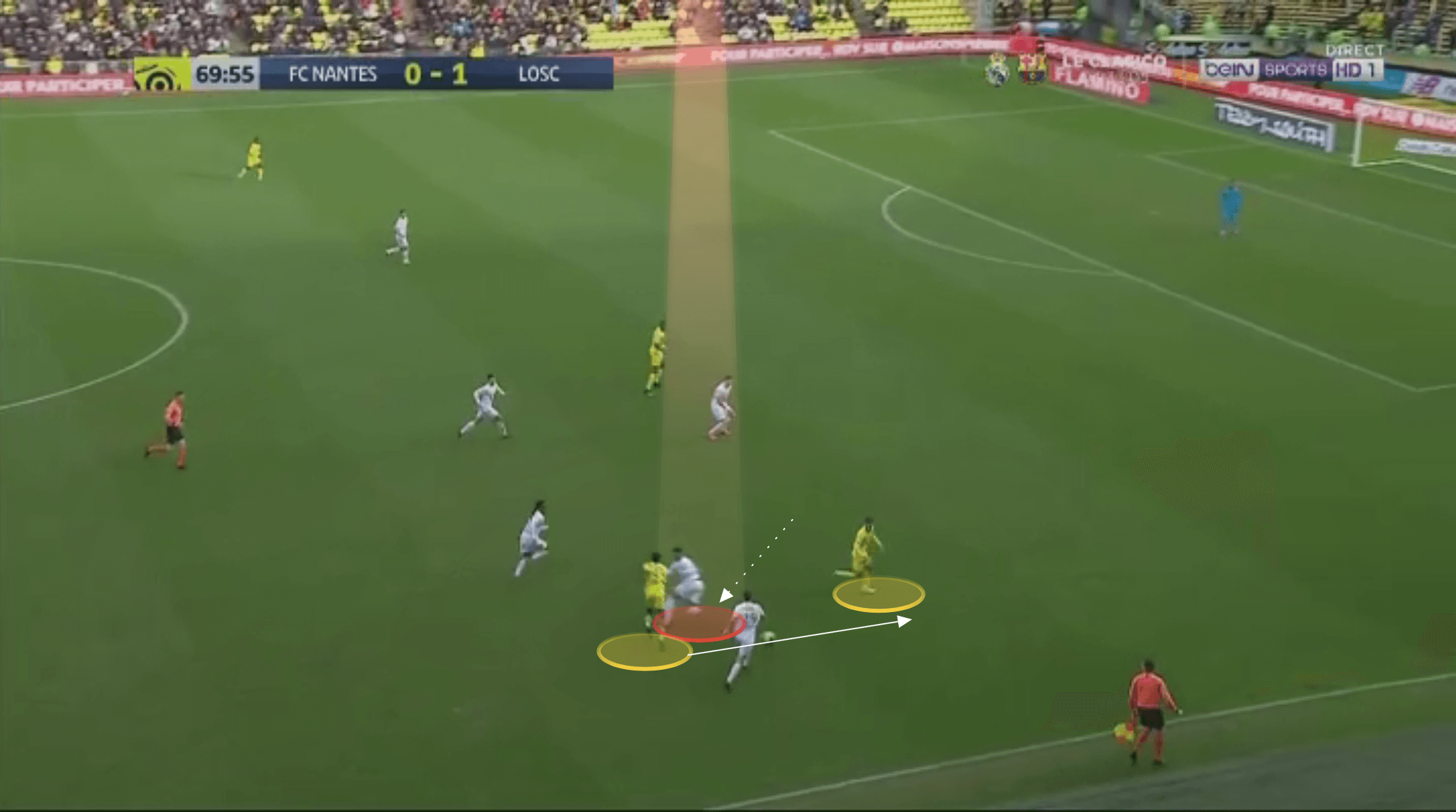
Conclusion
Gabriel is a complete defender who is going to contribute significantly in all phases of the game.
Despite being relatively young still, he has top-level experience already and excelled in Ligue 1.
Arsenal fans can expect him to come in and immediately make a difference to the starting XI.
He will provide some much-needed assistance on the left side of defence as part of a back three or a centre-back duo.
His progressive passing is a match made in heaven with the pace of Arsenal’s wide players and forwards, while his aerial ability and pace in defence will make Arsenal noticeably more sturdy at the back.

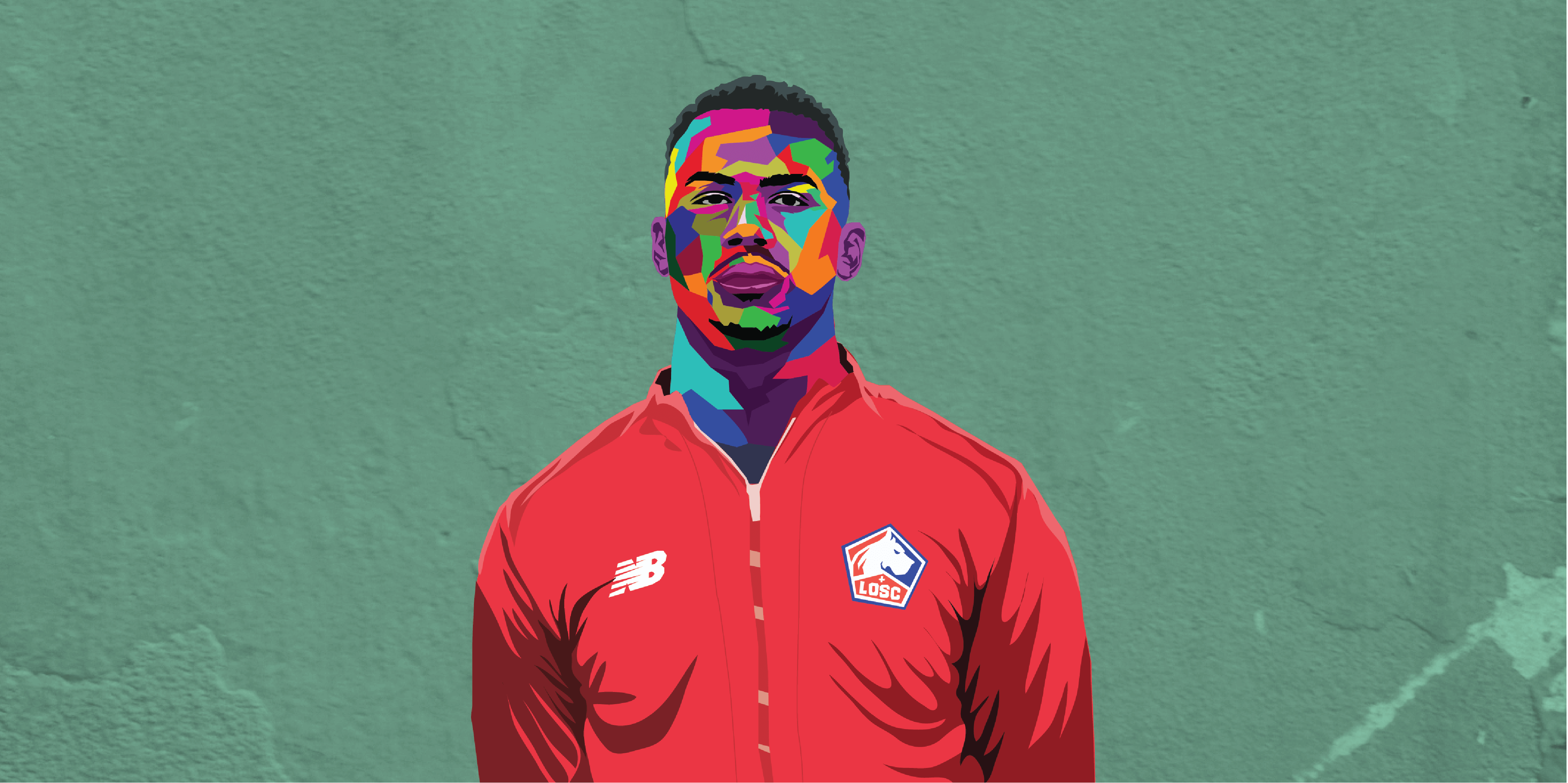



Comments